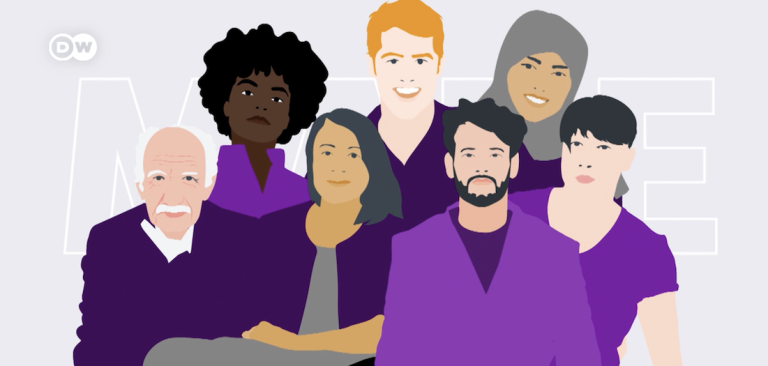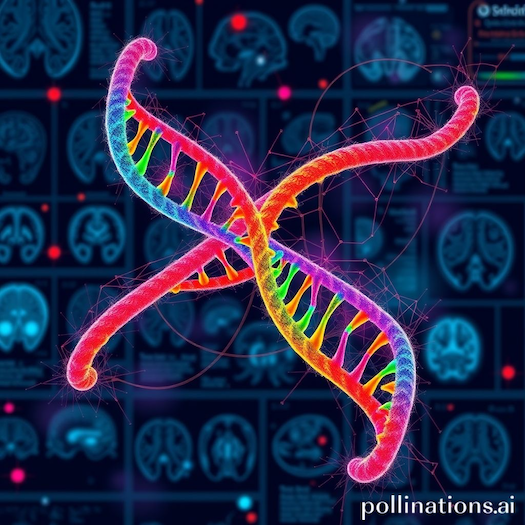
Latest scientific findings show biological mechanisms play crucial role in human attraction patterns

New York, N.Y. – Deutsche Welle published a study today about groundbreaking research continues to illuminate the complex biological and environmental factors that shape human sexual orientation, with scientists increasingly pointing to multiple mechanisms that influence attraction patterns during development.
The story, written in German by DW’s Alexander Freund, is titled “How does sexual orientation develop?” in English translation. The story posits, “Sexuality is diverse. The gender you’re attracted to is decided during puberty through an interplay of biological and psychosocial factors.”
Deutsche Welle, commonly shortened to DW, is a German state-funded television network,
state-owned international broadcaster funded by the Federal Government of Germany.
Biological Foundations Shape Early Development

Recent studies have reinforced the understanding that genes, the early uterine environment (such as prenatal hormones), and brain structure are among the primary biological factors influencing sexual orientation development.
Neural correlates, prenatal hormonal, genetic, and the immune system mechanisms have been implicated in the formation of sexual attraction patterns.
Research in the field has advanced significantly, with scientists examining how hormones, genetics, epigenetics, endocrine disruptors, immune response, and self-organization contribute to sexual differentiation of the brain.
These findings suggest that sexual orientation development involves a complex interplay of multiple biological systems working together during critical developmental periods.
The scientific community has increasingly focused on understanding how these various mechanisms interact.
Humans develop relatively stable attractions to sexual partners during maturation and present a spectrum of sexual orientation from homosexuality to heterosexuality encompassing varying degrees of bisexuality, indicating that orientation exists on a continuum rather than in discrete categories.
Gender Differences in Development Patterns
Emerging research suggests that the development of sexual orientation may vary between men and women. Studies indicate that biological pathways and timing of sexual identity formation can differ significantly across gender lines, with some research pointing to distinct developmental trajectories for male and female sexual orientation.
This gender-specific approach to understanding sexual orientation development has opened new avenues for research, particularly in examining how hormonal influences during prenatal development may affect males and females differently. The recognition of these differences has important implications for both scientific understanding and clinical approaches to LGBTQ+ health and development.
Environmental and Epigenetic Factors
While biological factors play a crucial role, researchers have also begun exploring how environmental influences interact with genetic predispositions. Epigenetic mechanisms – changes in gene expression without alterations to the underlying DNA sequence – may provide a bridge between environmental influences and biological development.
These findings suggest that sexual orientation development involves dynamic interactions between inherited genetic factors and environmental influences that can affect gene expression during critical developmental windows. This research has significant implications for understanding the full spectrum of human sexuality and gender identity.
Clinical and Social Implications

The expanding body of research on sexual orientation development has important implications for healthcare providers, educators, and policymakers.
Understanding the biological basis of sexual orientation can help inform clinical practice and reduce stigma surrounding LGBTQ+ individuals.
The decade between 1998 and 2008 saw rapid increases in research on adolescent sexual orientation development and related health issues, both in quantity and in quality of studies, and this momentum has continued into the current decade with increasingly sophisticated research methodologies.
Healthcare professionals are increasingly recognizing the importance of understanding sexual orientation development to provide appropriate care and support.
This knowledge can inform approaches to adolescent health, mental health services, and family counseling, helping create more inclusive and effective healthcare environments.
Future Research Directions
As the field continues to evolve, researchers are pursuing more comprehensive studies that examine the intersection of biological, psychological, and social factors in sexual orientation development. The integration of advanced neuroimaging techniques, genetic analysis, and longitudinal studies is providing unprecedented insights into these complex processes.
Scientists are also exploring how understanding sexual orientation development can inform broader questions about human behavior, brain development, and the relationship between biology and identity. This research continues to reveal the remarkable complexity of human sexuality and the multiple pathways through which attraction patterns emerge.
The ongoing research underscores that sexual orientation is a natural variation of human experience, shaped by complex biological processes that begin early in development and continue to influence individuals throughout their lives.